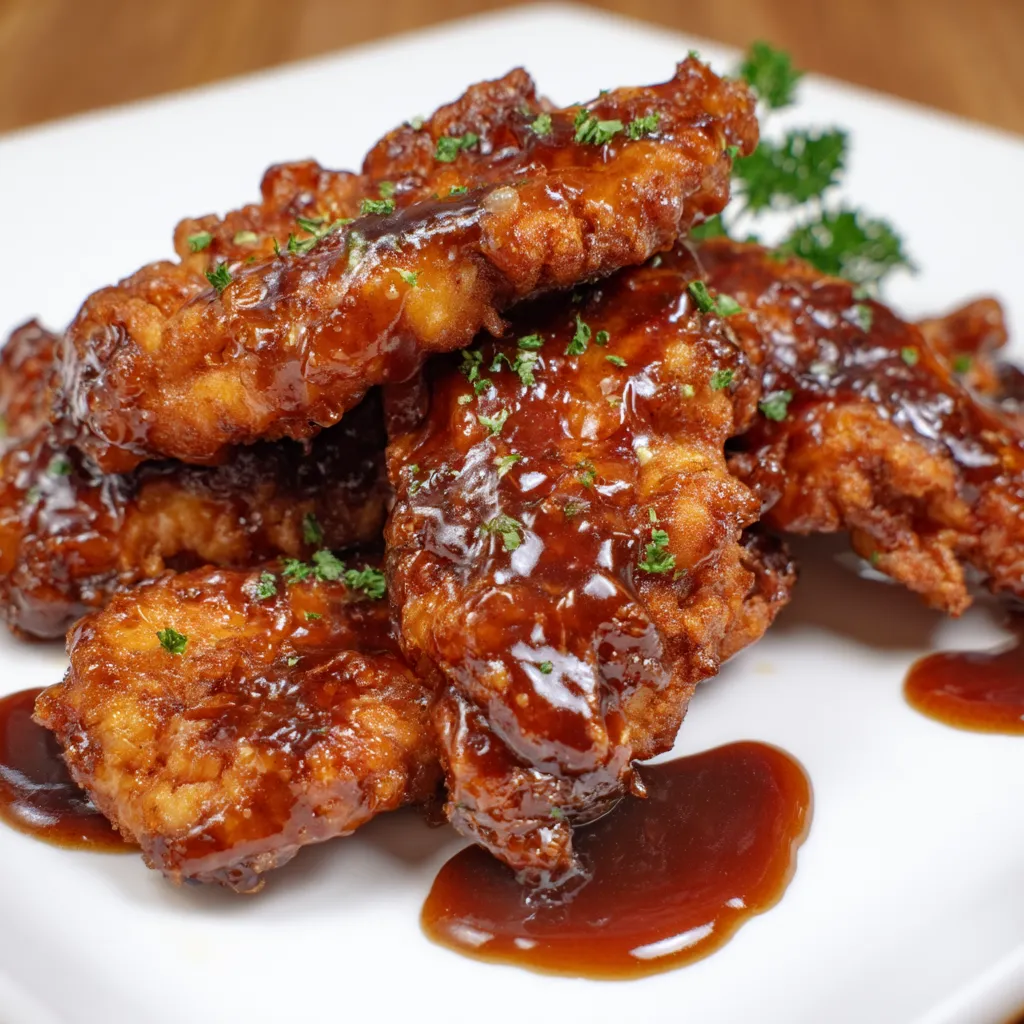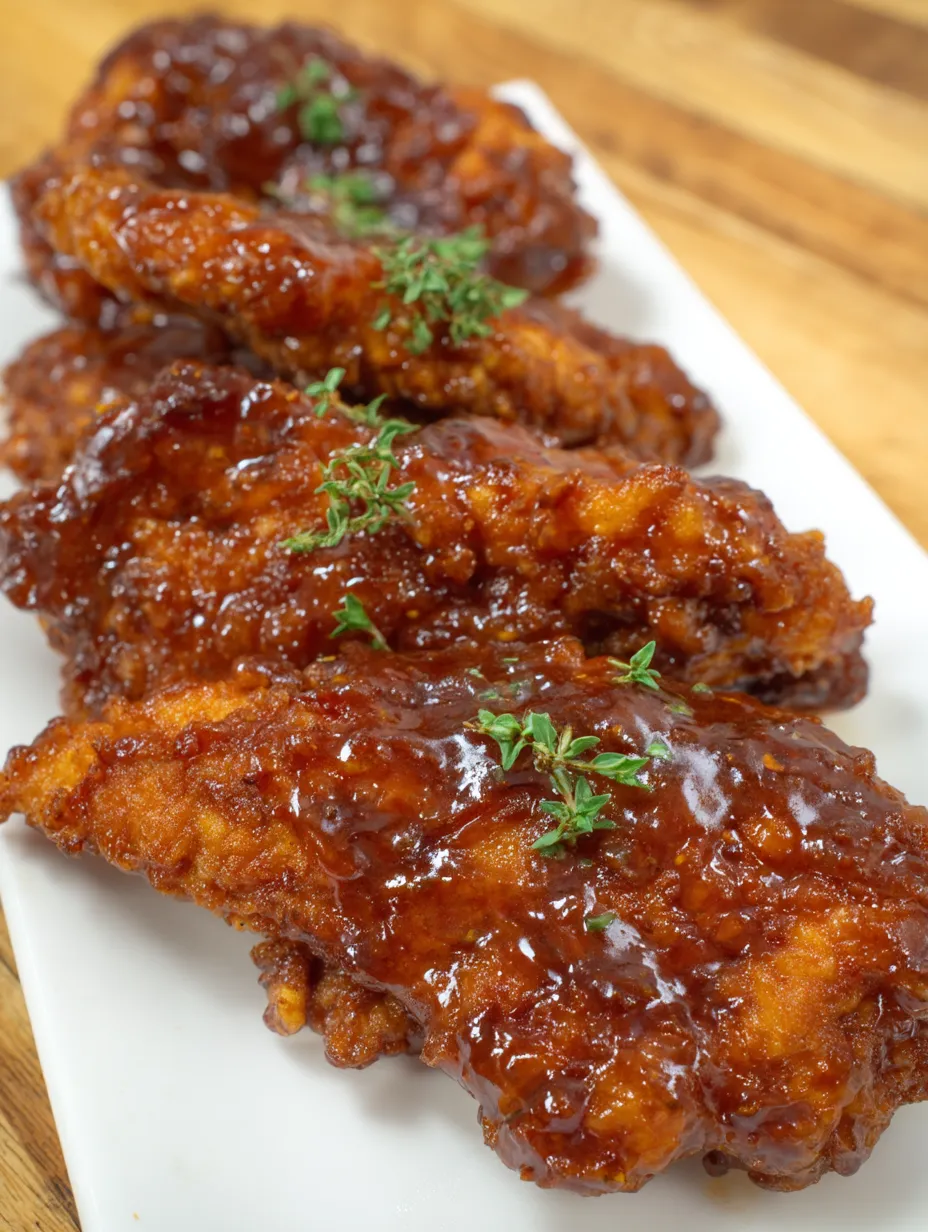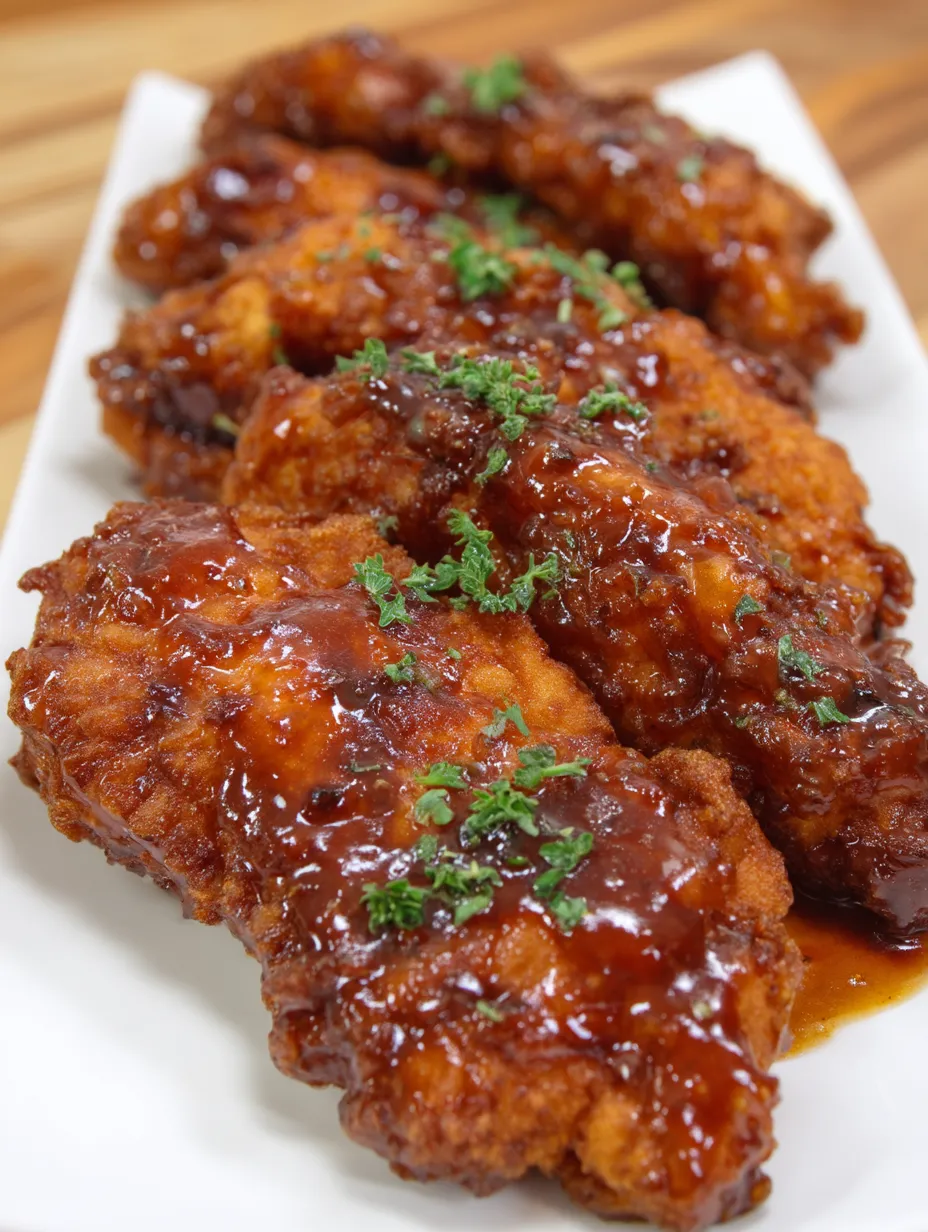 Pin it
Pin it
There's fried chicken, and then there's Korean style honey butter fried chicken – a game changer that'll ruin regular chicken tenders for you forever. These crispy, golden morsels get double fried for that signature crunch, then glazed with a sweet salty honey butter sauce that transforms them into something extraordinary. I started making these after a trip to Korea, and they've become my go to when I need to impress guests or satisfy a serious comfort food craving.
The first time I made these for friends, conversation literally stopped mid sentence when they took their first bites. One friend actually closed his eyes and said, "I need a minute with this chicken." That's when I knew this recipe was a keeper – food that makes people momentarily forget how to speak is always a win in my book.
Key Ingredients
- Chicken Tenders: Naturally portion sized and quick cooking—they stay juicy inside while the outside gets ultra crispy
- Sparkling Water: The secret to ethereally light, crispy batter—those bubbles create air pockets that expand when fried
- Seasoned Flour Clumps: Those little clusters form extra crunchy bits on the chicken—don't skip this textural magic
- Unsalted Butter: The foundation of that luscious sauce—using unsalted lets you control the final flavor
- Soy Sauce: Brings umami depth and balance to the sweetness—the Korean element that makes these unforgettable
I discovered the importance of the double fry technique after wondering why my homemade chicken never matched the crispiness of Korean chicken restaurants. That second trip to the fryer is non negotiable – it creates a crust that stays crunchy even after being coated in sauce. Sometimes authentic techniques exist for good reason!
 Pin it
Pin it
Step-by-Step Instructions
- Flavor Packed Marinade
- Starting with a well seasoned chicken base creates layers of flavor from the inside out. The combination of warm spices with both white and black pepper creates complex heat without overwhelming spiciness. Even this brief marinade time makes a noticeable difference in the final flavor.
- Strategic Dredging Stations
- Setting up the three step dredging process before you begin prevents the frustration of trying to mix components mid process with messy hands. The initial plain flour creates a dry surface for the wet batter to adhere to. The wet batter provides moisture for the seasoned flour to cling to, creating that perfect crust.
- Batter Magic
- Using ice cold sparkling water in the batter is crucial—the carbonation and cold temperature create lightness while inhibiting gluten development. The consistency should be like a thin pancake batter. Letting excess batter drip off prevents it from pooling during frying, which would create soggy spots.
- Textured Coating
- Those little clumps in the seasoned flour might seem strange, but they're essential for creating extra crunchy bits on the chicken's exterior. Pressing the flour mixture firmly onto the chicken ensures complete coverage with no bald spots. The brief resting period allows the coating to adhere properly before frying.
- Double Frying Technique
- The initial fry at 350°F cooks the chicken through while setting the crust. The brief second fry at the same temperature drives out remaining moisture in the coating, creating that distinctive crackly exterior that Korean fried chicken is famous for. Proper oil temperature is crucial—too hot burns the outside before cooking the inside, too cool results in greasy chicken.
- Honey Butter Harmony
- Melting the butter first creates the base for your sauce. Adding the honey, sugar, and soy sauce together allows them to meld into a perfectly balanced glaze. That brief cooking time reduces the sauce slightly, creating the perfect consistency that clings to the chicken without making it soggy. Brushing rather than tossing preserves maximum crispiness.
My first attempt at these was disappointing because I used flat soda instead of fresh sparkling water. The batter was heavy and didn't create that light, crispy texture. Fresh carbonation makes all the difference in achieving that perfect crust. Sometimes small details create big differences in the final result!
Serving Suggestions
These addictive chicken tenders need little accompaniment, but a few thoughtful sides elevate the meal. Serve with pickled daikon radish or quick pickled cucumbers for acidic contrast to cut through the richness. A side of steamed rice catches any extra sauce that might drip from the chicken. For a complete Korean inspired spread, add kimchi and a simple green salad dressed with sesame oil and rice vinegar.
Creative Variations
Transform this basic recipe with simple switches that create new flavor experiences. Add gochujang Korean chili paste to the sauce for a spicy sweet variation. Try a sprinkle of toasted sesame seeds and sliced green onions as garnish for added texture and visual appeal. For a citrusy twist, add a squeeze of fresh lime juice to the sauce just before coating the chicken. Vegetarians can enjoy the same technique with cauliflower florets or extra firm tofu as the base.
Make Ahead Tips
While these chicken tenders are best enjoyed immediately after cooking, you can prepare components ahead for easier assembly. The seasoned flour mixture can be made days in advance and stored in an airtight container. The marinated chicken can be prepared up to 24 hours ahead and refrigerated. For partially prepared tenders, complete the dredging, place on a parchment lined baking sheet without touching, cover with plastic wrap, and refrigerate for up to 2 hours before frying.
 Pin it
Pin it
I've been refining this recipe for about three years now, gradually perfecting the batter consistency and sauce proportions. What started as an attempt to recreate the chicken I fell in love with during my travels has become one of my signature dishes that friends and family specifically request. There's something deeply satisfying about mastering a technique from another culinary tradition and making it part of your own cooking repertoire—a delicious reminder of how food connects us across cultures.
Frequently Asked Questions
- → Can I use chicken breasts instead of tenders?
- Yes! Just slice boneless, skinless chicken breasts into 1-inch thick strips. You may need to adjust frying time slightly - use a meat thermometer to ensure they reach 165°F.
- → Why do I need to fry the chicken twice?
- The double-fry technique is essential for Korean-style fried chicken. The first fry cooks the chicken through, while the second fry creates that signature super-crispy exterior.
- → What oil is best for frying this chicken?
- Any neutral oil with a high smoke point works well - vegetable, canola, peanut, or rice bran oil are all good choices. Avoid olive oil or butter as they'll burn at frying temperatures.
- → Can I make these in an air fryer?
- Yes, though the texture won't be identical. Spray the coated tenders with oil, air fry at 400°F for 8 minutes, flip, spray again and cook 6-7 more minutes until crispy.
- → What can I serve with honey butter chicken tenders?
- Traditional Korean sides like kimchi or pickled radishes work beautifully, or try simple sides like steamed rice, coleslaw, potato wedges, or a fresh green salad.
- → Can I make the sauce spicy?
- Absolutely! Add 1-2 teaspoons of gochujang (Korean chili paste) or a sprinkle of Korean chili flakes (gochugaru) to the sauce for a spicy-sweet version.
